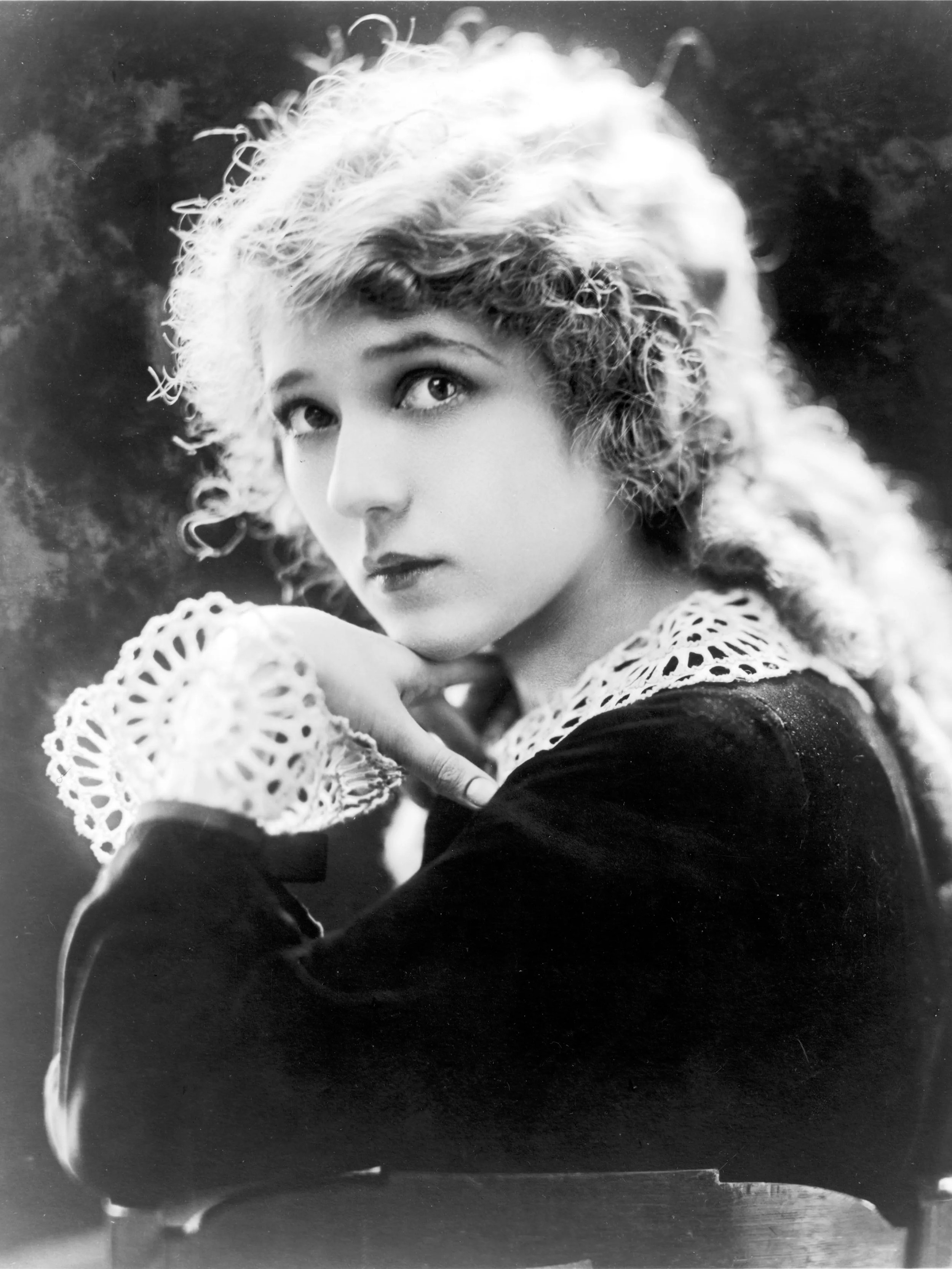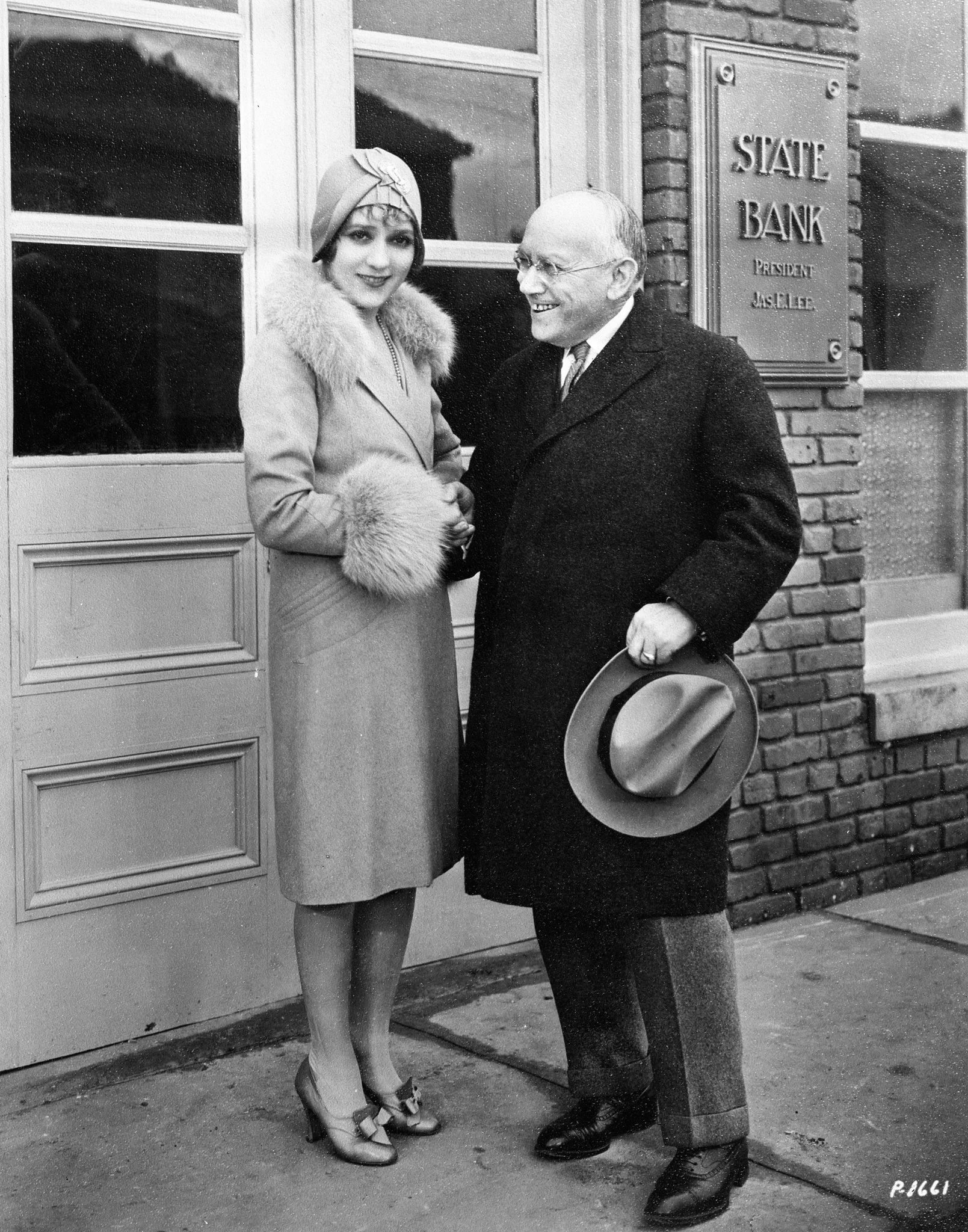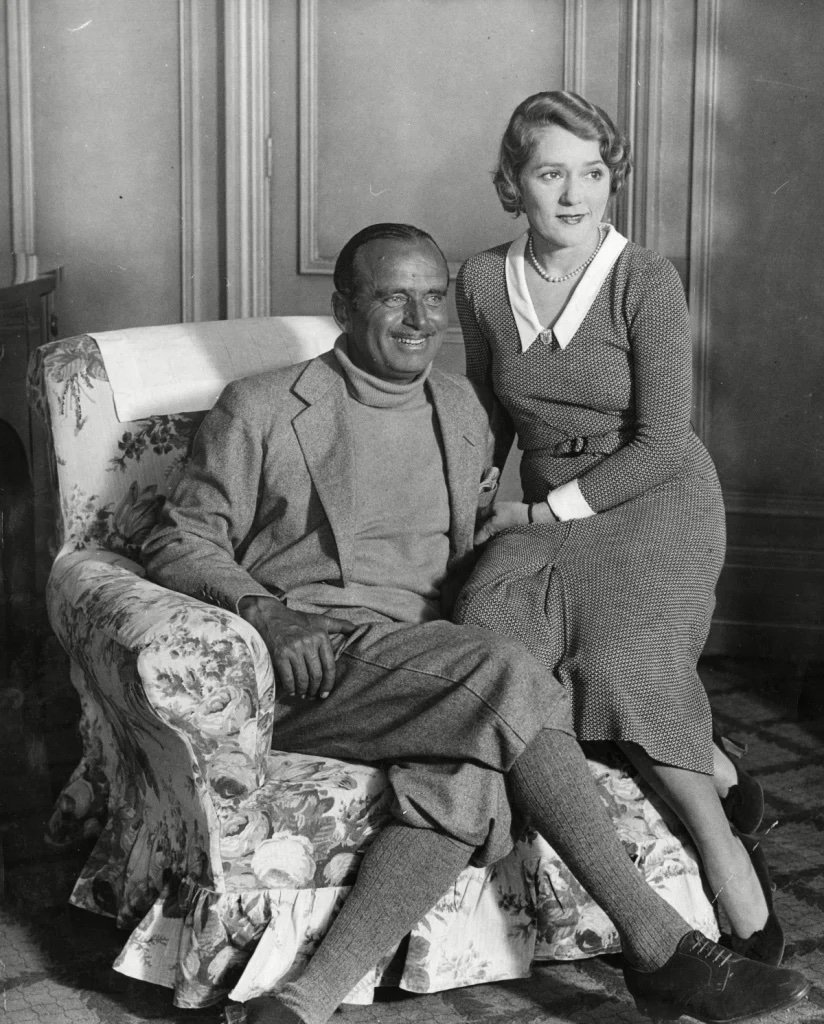Mary Pickford: Classic Film Star, Movie Mogul & America's Sweetheart
Mary Pickford was born Gladys Marie Smith on April 8, 1892, in Toronto, Ontario, Canada to parents John Charles Smith and Charlotte Hennessey. Mary had two younger siblings, Charlotte - whom everyone called Lottie - and John Charles who would be known as Jack. In many ways, Mary Pickford never had the chance to have a real childhood. Her father was an alcoholic, and he abandoned the family soon after little Jack was born. About a year and a half later, when Mary was 6 years old, he passed away in a work accident. Mary’s mom was paralyzed with grief, and then Jack became deathly ill. With so many medical bills and a family to pay for, they had to figure something out.
Mary Pickford as a Child
Mary’s mom started sewing and took in boarders to help pay the bills. One of the boarders was a theatrical manager, and he suggested Mary and her sister Lottie be given some small roles on the stage. Thus began her career. By the early 1900s, the whole family was involved. They would all travel together, each playing roles whenever they could get cast … but from the start, Mary was the most talented and from all accounts, she was the most ambitious too, wanting success more than anything.
Young Mary Pickford
Mary only had a few years of formal education, and instead did what she could to learn while she was touring. She had many long train rides where she taught herself to read, and developed unparalleled street smarts. As a pre-teen, she could find her way around a new town, negotiate reasonable rates for room and board, and she earned and saved as much as possible to send back to her family. You have to remember, this was like, 1904 or 1905, not many women - let alone young girls - were able to live like this.
In 1907, at 15 years old, she finally secured her first Broadway part, working with David Belasco in The Warrens of Virginia. The story of her tenacity to get that role on the stage tells so much about her - and I tell that story in my Mary Pickford Universally Mini on Patreon. It was also about this time she changed her name from Gladys Marie Smith to Mary Pickford, and the rest of the family followed suit, using Pickford as well.
Mary Pickford poses in front of the mirror.
I have to imagine that despite her innate ambition and charisma, that it must have been tough on Mary to be responsible for her family at such a young age, and to feel the pressure of everyone counting on her. We see this so often with child stars today … teenagers, or even kids, who have to give up their childhoods for a family that’s financially dependent on them. I’m kind of surprised Mary made it out as well as she did.
Mary performed with The Warrens of Virginia for about 2 years, and with her run wrapping up, she approached director D. W. Griffith at the Biograph Company in search of a job until her next theater gig began. She was nervous to be seen in the Biograph offices - worried someone from the theater might recognize her and either get her in trouble, or look down on her for considering such a new form of entertainment that was considered by most to be lower class and just a fad.
Just as she’d done with Belasco, Mary Pickford managed to charm DW with her intelligence and wit, and he hired her on for $10 a week. At the time, the highest paid actress at Biograph was actress Florence Lawrence, who was known as the Biograph Girl. In a hilarious story that I’ve shared on my channel before - my Uncle Carl Laemmle stole Florence Lawrence away from Biograph for his Independent Moving Pictures Company, and that could not have worked out any better for Mary, as she got the opportunity to be the next Biograph Girl!
Working with DW Griffith at Biograph was great training for Mary. DW was paid a bonus for every foot of film produced, and it cost too much to do many reshoots, so films were churned out quickly. Mary learned to play to the camera instead of an audience, and DW taught her acting tricks to make her performance more realistic.
Mary Pickford and her famous curls.
Mary Pickford was really popular with audiences. If you said, “The Biograph Girl,” or “The Girl with the Golden Curls,” people would know who you were talking about. But though they knew her face and her movies, nobody knew her name. That was the very reason Carl Laemmle was able to lure Florence Lawrence away from Biograph, and that was how he got Mary Pickford too. Carl Laemmle promised Mary Pickford she would have name billing, and he’d make her a star.
Now at this same time, Mary Pickford had been dating actor Owen Moore, whom she had met the previous year working at Biograph. Her mom was wary of their relationship because Owen had a reputation for drinking and treating women poorly, and she believed Mary would be better off focusing on her work. This may have added to Mary’s decision to take the job at IMP where her salary almost doubled to $175 a week and she could show her mom just how seriously she was taking her work. Uncle Carl even hired Charlotte, Lottie, and Jack for bit parts with IMP. It didn’t hurt that Owen Moore was also now working at IMP …though Mary’s mom didn’t know this at first.
Mary Pickford and Uncle Carl Laemmle
When Uncle Carl brought Mary Pickford to IMP, it was a pretty big win for him. First, because she was one of the most famous faces in the world, and second because Biograph was one of the companies that made up the Edison Trust, and Thomas Edison and Uncle Carl as you might remember …were not getting along too well. Remember the story how Thomas Edison sued my Uncle 289 times? It was actually pretty dangerous of my Uncle to be running an independent studio, fighting Thomas Edison, trying to stay clear of Edison’s lackeys who would have no qualms about destroying his life, and then to take one of their biggest stars on top of it all? Carl needed a plan to keep his productions going safely.
In January 1911, Mary and Owen were secretly married, and around the same time, IMP moved its productions from Fort Lee, New Jersey to Havana, Cuba. Mary, Owen, and her whole family made the voyage. IMP’s trek to Cuba provided some distance and security from Edison, plus the winter weather was much better than New Jersey. Unfortunately, it didn’t allow for Mary and Owen to keep their marriage secret for very long. A few days into the trip, Mary’s mom discovered her and Owen together, and was furious. It caused a ton of tension for everyone down in Cuba.
Their time in Cuba ended early anyway, after Owen got in a fistfight with Thomas Ince’s assistant and police were called. Mary joined him on the boat back to the US, and as 1911 wrapped, Mary was poached once again - this time by the new Majestic Motion Picture Company, which offered her $225 a week, and agreed to sign Owen as well.
Mary Pickford and Owen Moore
Mary and Owen’s relationship was troubled, to the say the least, and as Mary’s star continued to soar, Owen’s career was at a standstill at best. Mary encouraged him to direct, hoping the promotion would build his confidence and save their marriage, but instead he used his position to berate her and put her down in front of others.
By 1914, Mary tried her best, but finally saw how incompatible they were. She and Owen moved to Los Angeles, at times living together and at times living apart. It’s crazy to think after all this life and all this career, Mary is all of 22 years old.
In 1916, at 24 years old, Mary became one of the first movie stars to start her own production company, which she called the Mary Pickford Film Corporation. All of her films were to be distributed by Famous Players-Lasky, which soon took over Paramount. At a friend’s party, Mary met Douglas Fairbanks for the first time, and they became instant friends…and then a little more. It’s possible their friendship would have ended at just a friendship, but when the US reached out to Hollywood for help promoting Liberty Bonds, Mary Pickford, Douglas Fairbanks, and Charlie Chaplin all agreed to sign on. They traveled by train, to major rallies across the country. By the time they returned, there was no doubt about it … Mary Pickford and Doug Fairbanks were in love.
Mary Pickford with Douglas Fairbanks.
But wait! I must pause the love story. Because Mary just had too much going on all the time, something major happened in 1919. Mary Pickford, Douglas Fairbanks, Charlie Chaplin, and DW Griffith started United Artists. Mary, Charlie, and Douglas were pretty much the three biggest stars in Hollywood, and the massive crowds they saw as they were touring the country selling Liberty Bonds probably solidified that in their mind. With each career move, Mary Pickford had increased her popularity, her power, and her salary, but studios were now trying to find ways to take some of that back. They wanted more creative control, and they didn’t want to be paying such high salaries.
They were also block booking, which meant when they distributed movies to theaters they’d say, “Hey we’re going to sell you these Mary Pickford films, but you also have to buy these other films. Mary was frustrated that some theaters couldn’t afford to screen her films since they were so expensive attached to the other films, and she was frustrated she was being used to sell other films, sometimes bad films, without getting anything for it. United Artists was a way to give the power back to the artists instead of letting big studios run the show.
Mary Pickford, Douglas Fairbanks, and Charlie Chaplin
Now let’s get back to Doug and Mary. Not only were they business partners, but they’d become life partners. It would never be quite so easy as that though, would it. After all, Mary was still married to Owen Moore, and Douglas Fairbanks was married to Anna Beth Sully. Douglas Fairbanks would get a divorce in 1918, and in 1920, Mary Pickford went to Nevada to officially divorce Owen as well.
Their fans were already onto their budding relationship, and they were only encouraged each time they made an appearance together. The Liberty Bonds, United Artists … each time Mary and Doug would insist they were only friends. With their divorces finalized, Mary and Doug officially married in 1920 and made their relationship public. This was an especially big risk for Mary, who as America’s wholesome sweetheart, risked her entire career by going public - but fortunately the world was ecstatic.
Mary Pickford and Douglas Fairbanks.
Mary Pickford and Douglas Fairbanks lived up to their golden reputation. They spent every night together for 7 years. They were the first celebrities to put their hand and footprints in cement outside Grauman’s Chinese Theater. They were always hosting parties for friends and family. They wanted to set a good example and support the communities around them. They often hosted philanthropic events together, and in 1921, Mary went one step further. With talkies coming in, putting many of her friends out of work, Mary started the Motion Picture Relief Fund to provide basic healthcare and social welfare services to those in the industry who were struggling.
Then in 1932, during the Great Depression, Mary introduced the Payroll Pledge Program which deducted a small amount of studio workers’ paychecks to give to others in need. In 1927, she was also one of the founding members of the Academy of Motion Picture Arts and Sciences. In the 1920s, Mary really wanted to focus on the quality of her films and only made about a film a year. And these years, she made some great silent films. Tess of the Storm Country, Sparrows, Rosita, and My Best Girl.
Mary Pickford stands with her Academy Award.
In 1928 she won an Oscar for Best Actress for Coquette, and she and Douglas Fairbanks had their long-awaited collaboration in 1929 in Taming of the Shrew. In 1933, after more than two decades in the film industry, she retired from acting. After Mary’s mother’s death in 1928, Mary started drinking quite a bit, and Douglas was not happy about it. He often accused her of having affairs, though he was having affairs himself. 1933, after 15 years together, Mary filed for divorce from Douglas, citing mental cruelty, neglect, and indifference.
Mary would stay at Pickfair, her beautiful Beverly Hills home she’d shared with Douglas Fairbanks, and in 1937 she married Buddy Rogers, whom she had previously worked with on the film My Best Girl. In the 1940s, she adopted two children, Roxanne and Ronald. In 1956, Mary established the Mary Pickford Charitable Trust, and after her death in 1979, it became the Mary Pickford Foundation, which still exists today. They continue Mary’s charitable work, as well as preserving her film work and her memory. The Mary Pickford Foundation is a huge part of why this video is what it is today.










